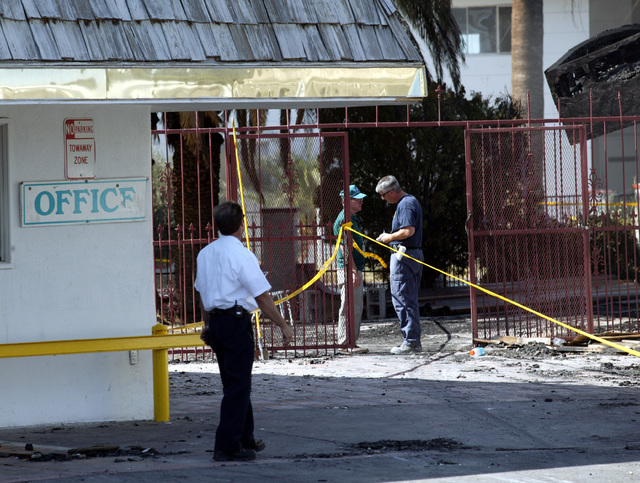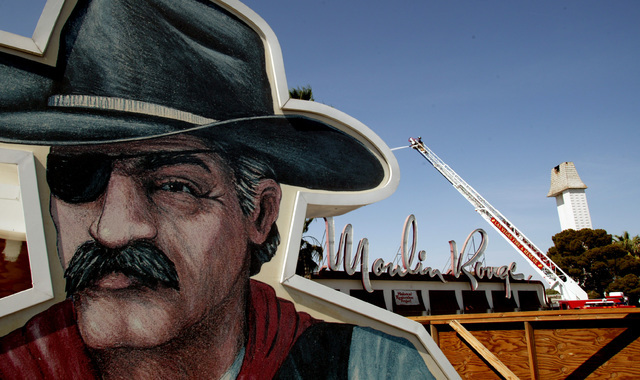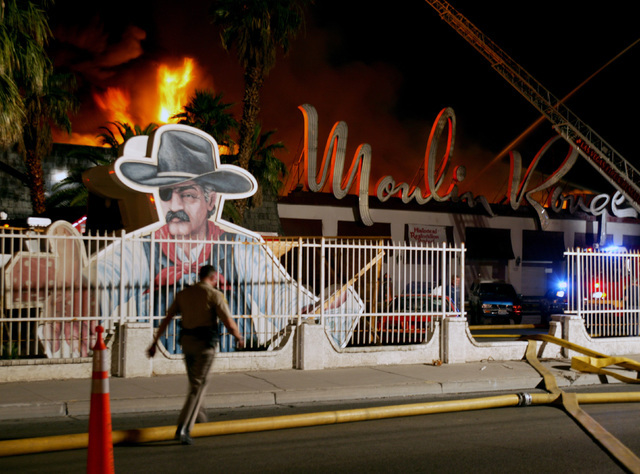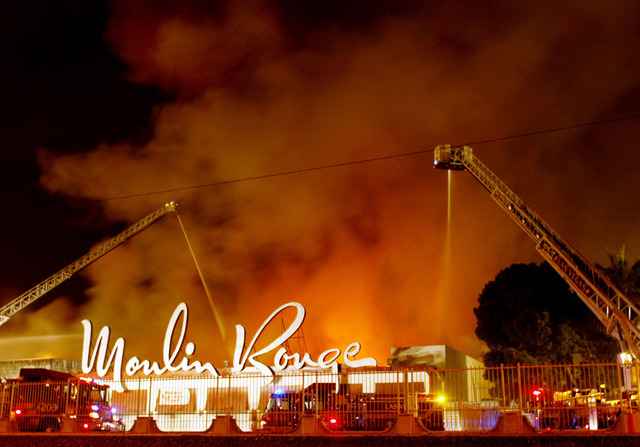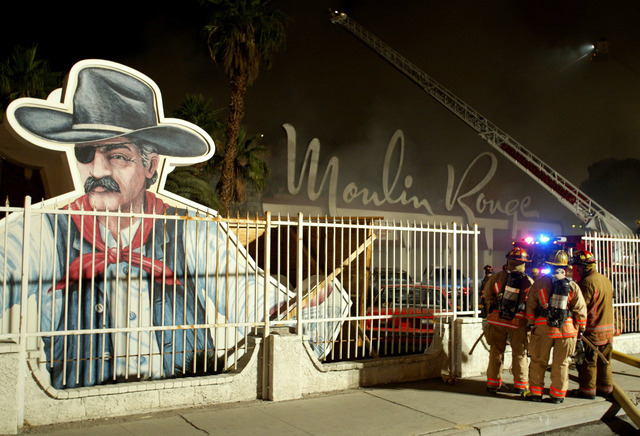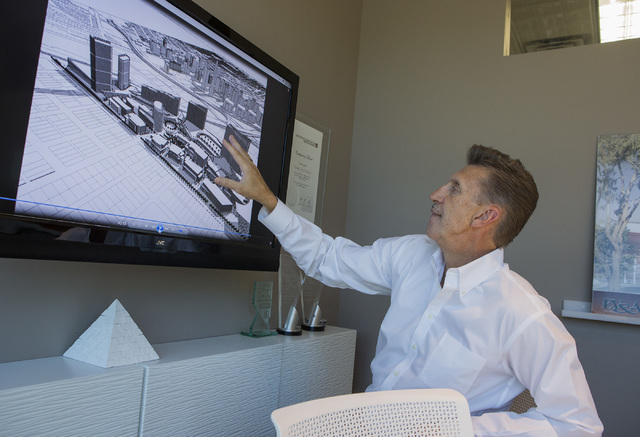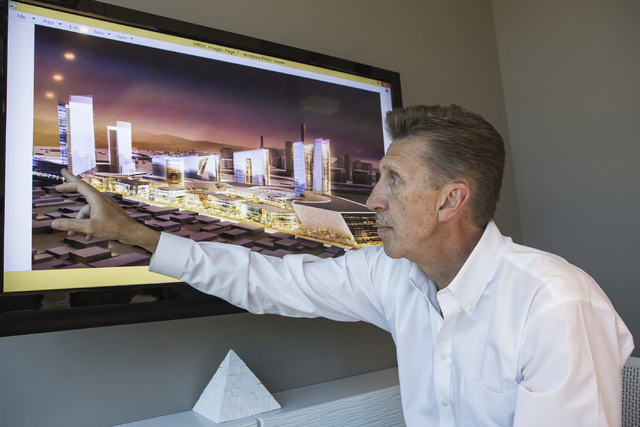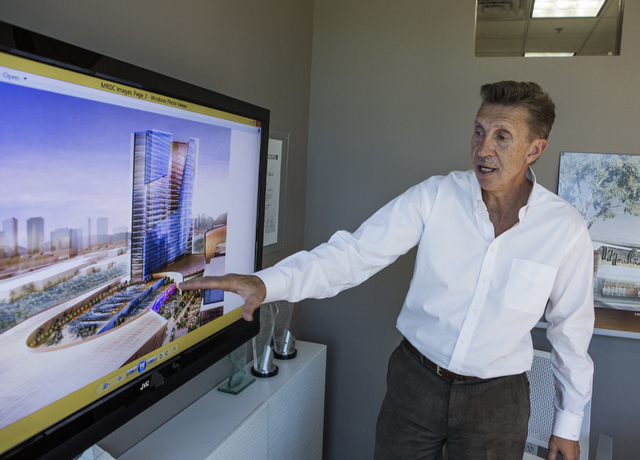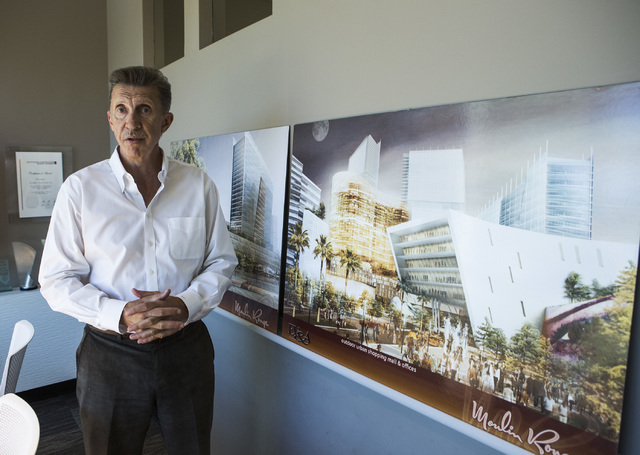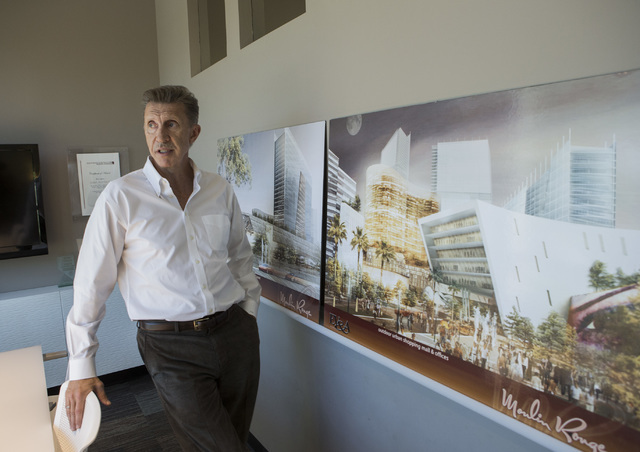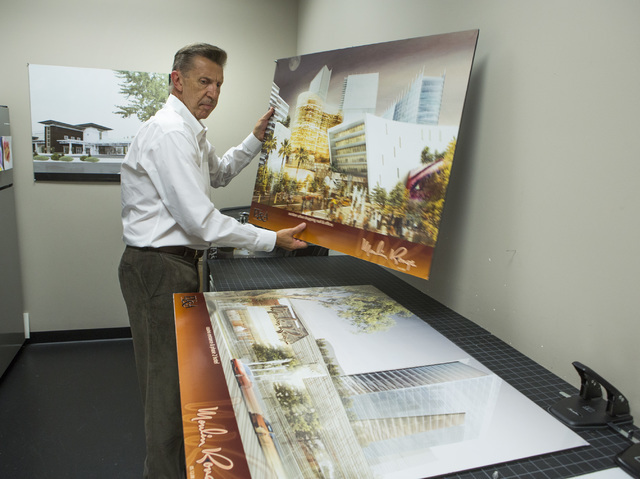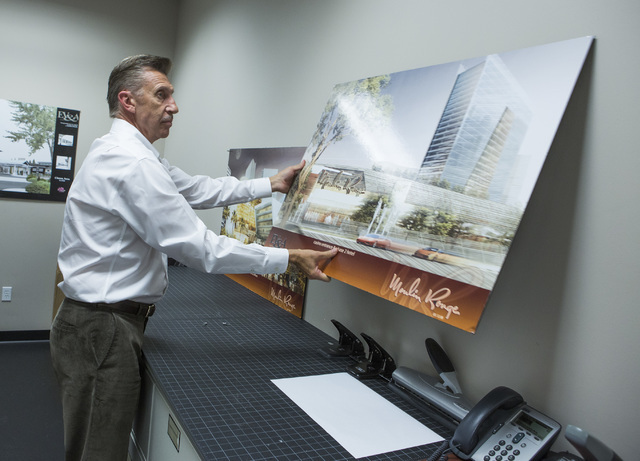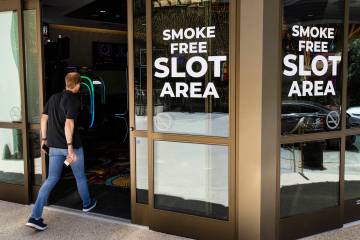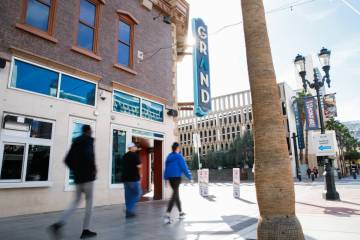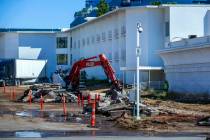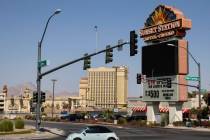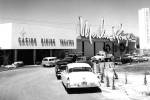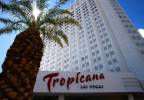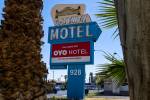What will it take to make the Moulin Rouge succeed in Las Vegas?
There’s a faint but promising scent of success for the next Moulin Rouge development. The economy is ripe for another attempt, and there is a record number of interested developers ready to submit offers for the site.
“We’re finally beginning to attract the attention of people that do have the resources to make it happen,” said Kevin Hanchett, the receiver of the property since 2013.
But it will take more than funding to get the Moulin Rouge to surface. The site’s rich 60-year history of failed development attempts shows the next developer must be better at forming and maintaining relationships, both internally within the project and externally with the black community surrounding the site.
The Moulin Rouge is not just a typically complicated commercial development project. Adding even more complexity to this project is the casino’s intimate relationship with the city’s civil rights history, leading to the historically black neighborhood’s current struggle with economic development.
The original Moulin Rouge opened in downtown Las Vegas in 1955 at an estimated cost of $3.5 million. After an astonishingly successful six-month run, it unexpectedly closed its doors that November.
As the first racially integrated casino in Las Vegas, its abrupt closure spawned several theories. Some contend that police shut the place down in a racist act. Others contend its closing was a conspiracy by white hotel and casino owners on the Strip. Still others say there was pressure from the banks that were holding the mortgage, and others blame mismanagement.
Either way, the Moulin Rouge has since struggled to again become a successful competitor with the other hotel and casinos on the Strip.
“It’s a significant project that is going to require someone who has the financial ability, the ability to execute a commercial project and the passion and vision to really do something for the community in that area,” said Sallie Doebler, who is the business developer for the Las Vegas branch of Korte, a national design-build construction company.
FUNDING AND LEADERSHIP
A dive into the Moulin Rouge’s development past reveals that the reasons for failed redevelopment attempts can be split into two narratives in two time frames.
Between 1955 and 2003, redevelopment attempts apparently failed due to a web of issues ranging from a lack of support from city politicians, to failures in securing funding, to competing visions for the property. Between 2004 and now, though, there are clear reasons why redevelopment attempts have floundered: a lack of funding and/or a lack of leadership.
The closest the property has come to redevelopment was in 2004, when the Moulin Rouge Development Corp. bought the property for $12.1 million. Dale Scott and his colleagues, Chauncey Moore and Rod Bickerstaff, were the first black owners of the property since 1989 — and everything seemed like it was coming together.
“We had a master plan to actually do a hotel and casino,” said Scott, president of the former Moulin Rouge Development Corp. “The master plan consisted of over 80 acres plus almost 100 acres to revitalize that side of town and then make it a prominent part of the city overall.” The group was organized internally, it had overall support from the community, and it had the funding — but, ultimately the economy sabotaged the project.
“We could have developed that whole West side had it not have been for the recession,” Scott said. “I think the project was at its peak.”
After the Moulin Rouge Development Corp. lost its largest investor, things began to unravel. The company went into bankruptcy, the property went into foreclosure, the servicing company for the lenders went bankrupt, and the property went into receivership in 2013. Over 300 lenders are still seeking repayment.
Since the property went into receivership, no interested buyer has been able to close on a sale.
“So far, everybody has been relying upon other people’s money to fund the operation,” Hanchett said. “They have tried to tie up the property so they have the rights to buy it, and then fund the acquisition after they have the rights to the property. That’s not uncommon, but it’s better to have somebody who is able to complete the deal with their own resources.”
When money comes from so many different sources, he said, there is frequently a clash within the company over who has control over the development — which is exactly what happened in the most recent failed development attempt in July by Moulin Rouge Holdings LLC.
In fact, the managing member of Moulin Rouge Holdings LLC, Boris London would have ended up suing his partner, Scott Johnson and the receiver, had the court approved the $8 million sale, according to London’s attorney.
“People don’t understand the complexity and what it takes to make a commercial development project really work,” Doebler said. “You have to have the right partners. You have to have the right consultants. You have to have the right pricing to make the project pencil (be revenue generating), and you have to have community support.”
COMMUNITY SUPPORT
This last ingredient is more salient than ever, as the black community surrounding the Moulin Rouge property, though not as united as some in the community would like, is working to get the next redevelopment underway.
Katherine Duncan, president of the Ward 5 Chamber of Commerce, has been working as a “coordinating agency” ever since the chamber was unable to come up with the funds to purchase the property for development in February. She’s been communicating with every interested buyer that has come along.
“We can bring investors to the table with the developers,” she said. “Developers come to Las Vegas, but they don’t necessarily understand our political climate, the gaming, and how it all works. … I have certain information, certain political pulls, certain history that goes with the project.”
Duncan is looking for developers who are interested in working with the community.
However, Assemblyman Harvey Munford, D-Las Vegas, who is also director of the chamber, said the community is not as involved as it should be in the Ward 5 Chamber of Commerce’s work.
The black community must ensure that the developer who will eventually take hold of the project is one that respects the civil rights history and surrounding culture of the site, he said.
“There’s not unity within the leadership: the elected officials, even some of the ministers or pastors. We all have to work together,” Munford said. “They (church leaders) could alert the members of their congregation that they should be enthusiastic (about the Moulin Rouge potential) and how important it is to the future of this community.”
Munford and Duncan imagine a family-friendly casino that pays tribute to the site’s civil rights history.
“It would be like an anchor to our community,” Munford said.
WHEN, NOT IF
It’s only a matter of time until the receiver files another motion to approve a sale of the property. Southern Nevada is experiencing a construction boom, and the West side is gaining momentum.
Tenaya Creek Brewery relocated from northwest Las Vegas to right across from the Moulin Rouge property last November.
“The area is ripe for redevelopment,” said Christina Roush, co-owner of the brewery. “The price of land in the area is probably the best in the valley for its central location and proximity to freeway access and downtown amenities, culture and economic drivers.”
The only thing standing in the way of a successful redevelopment is whether the next developer has learned the lessons from the site’s 60-year history of failure. 
Contact Nicole Raz at nraz@reviewjournal.com or 702-380-4512. Follow @JournalistNikki on Twitter.
RELATED
Judge turns down sale of Moulin Rouge
Court hearing to decide fate of Moulin Rouge
Moulin Rouge site receiver files motion to sell property for $8M
There's some tension surrounding the new plans for Moulin Rouge
Groundbreaking held for new Moulin Rouge Las Vegas — PHOTOS




